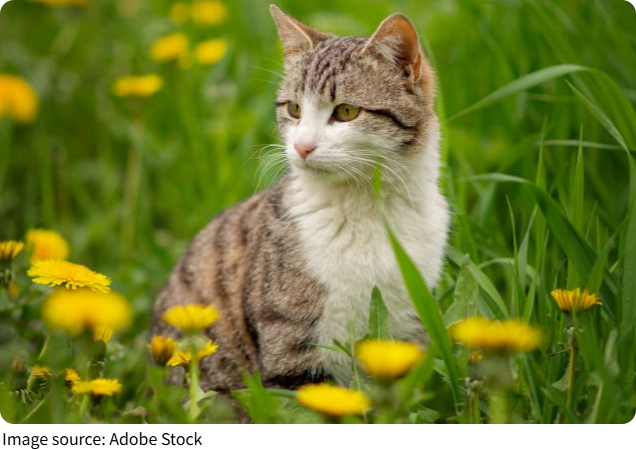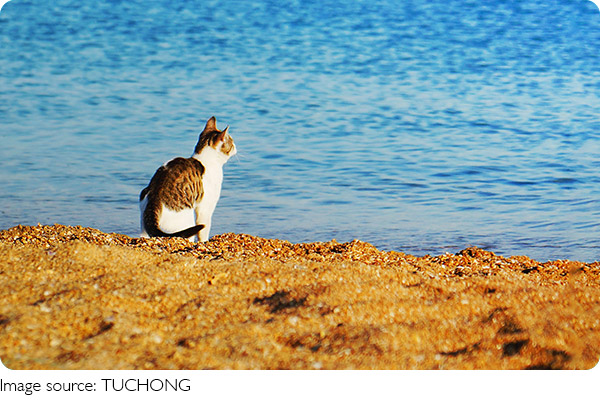Cat Survival Secrets

We've all heard the saying that "cats have nine lives." While this is clearly an old saying, many cat lovers might agree that their furry friend seems to escape danger in the most surprising ways.
But is there any truth to this belief? Let's dig into the science and behavior behind this popular idea — you'll be amazed at what makes cats such incredible survivors!
Where Did the Saying Come From?
The belief that cats have multiple lives has existed for hundreds of years. In some cultures, it's seven lives; in others, it's nine. This likely started because of how cats often survive situations that would seriously harm other animals. People in ancient times probably saw cats fall from high places and walk away unharmed, and thought they must have some kind of magical protection.
While the number "nine" may be symbolic, the truth is that cats do have real physical and behavioral traits that help them survive dangerous situations.
The Magic of the Cat Body
Cats are built for survival. Their flexible bodies, sharp senses, and strong instincts allow them to handle physical challenges better than many animals their size.
One key reason cats seem so lucky is their flexible spine. Their backbone has more vertebrae than humans, giving them amazing balance and agility. This flexibility helps them twist and turn their bodies mid-air, especially when falling — a skill called the "righting reflex," which we'll talk about in a moment.
In addition, their light weight and muscular limbs help absorb shock when landing, which greatly reduces injury.
The Righting Reflex: A Life-Saver
One of the most incredible survival tools cats have is their "righting reflex." This is the cat's natural ability to twist its body in mid-air to land on its feet. Kittens begin to develop this skill at just three weeks old, and most cats have mastered it by six to seven weeks.
Here's how it works:
When a cat falls, it quickly senses the direction of the fall and rotates its head to face downward. Then, it twists its spine and brings its feet under its body to prepare for landing. Their tail also helps with balance and rotation. All this happens in less than a second!
Of course, this doesn't mean cats are immune to injury — but it explains how they can survive falls that would be very harmful to other animals.
Low Body Weight Helps, Too
Another reason cats survive falls well is their relatively low body weight compared to their surface area. This slows their falling speed. Scientists have found that cats reach a lower terminal velocity (maximum falling speed) than heavier animals, allowing them to land more gently.
One study published in the Journal of the American Veterinary Medical Association in 1987 looked at 132 cats that had fallen from high buildings. Surprisingly, many of them survived — especially those who fell from above the 7th floor. Researchers believed these cats had more time to correct their posture and relax their bodies before hitting the ground.
Incredible Reflexes and Fast Reactions
Cats have extremely fast reflexes. Their ability to respond instantly to sudden sounds or movements helps them avoid danger. They can leap away from threats, dodge falling objects, and escape tight spaces with amazing speed.
Their sharp eyesight, especially in low light, and their sensitive hearing make them excellent at sensing potential threats before they become serious.
Curious but Careful
Although cats are known for their curiosity, they're also very cautious. Unlike some animals that rush into unknown situations, cats tend to observe quietly and approach carefully. This behavior helps them avoid many dangers.
They also tend to hide or rest in safe, elevated spots — like bookshelves or windowsills — which keeps them away from ground-level threats. Their love for heights might seem risky, but for cats, being up high is usually safer than being down low.
Healing Abilities
While not magical, cats do have strong immune systems and quick healing abilities. Their grooming behavior helps keep wounds clean, and they often stay still and rest when injured, which helps the body recover. Some researchers have even studied cat purring as a possible healing mechanism — the low-frequency vibrations may promote skeletal and muscle repair, although more research is needed in this area.
But They're Not Invincible
Despite all these impressive traits, cats are not invincible. They can and do get injured, especially when they are outside unsupervised or live in dangerous environments. Falls from great heights, car accidents, or certain illnesses can still be serious. That's why it's important for cat owners to keep their pets safe, provide regular vet care, and avoid risky situations.

Let's Appreciate Our Feline Friends
Cats may not truly have seven or nine lives, but the way they move, react, and survive is nothing short of amazing. Their bodies are built for agility and balance, their instincts are sharp, and their reflexes are lightning-fast — all combining to give them a well-earned reputation as some of nature's most graceful survivors.
-
 Meet The ChipmunksUnlock the surprising secrets of chipmunks — discover where they live, how they survive, and why they’re thriving everywhere!
Meet The ChipmunksUnlock the surprising secrets of chipmunks — discover where they live, how they survive, and why they’re thriving everywhere! -
 The Cute Mania in AnimalsWhen Pets Start Looking The Same: The Cute Crisis You Didn’t See Coming.
The Cute Mania in AnimalsWhen Pets Start Looking The Same: The Cute Crisis You Didn’t See Coming. -
 Dialects in AnimalsDo Animals Have Accents? You Won’t Believe What Science Just Discovered!
Dialects in AnimalsDo Animals Have Accents? You Won’t Believe What Science Just Discovered!